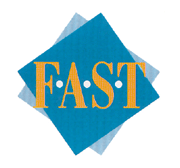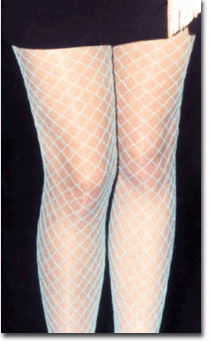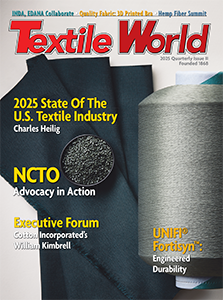
Purchasing entails a great deal more than finding the right product from the right supplier.
It’s a game of balancing price, delivery, quality and more. In an information age, when
time and knowledge are among the most valuable commodities to profitable operation, exploring new
strategies and tactics for making efficient purchases can pay significant dividends.That, in
essence, is the whole reason for the annual
Textile Industries Buyers Guide issue. It is the goal of the editors of
TI to provide a comprehensive reference of resources to make purchasing easier.But
purchasing entails a great deal more than finding the right product from the right supplier. Price,
quality, delivery, availability, lead times and more have a significant impact on the ultimate
total cost of a product. As more than one textile manufacturer has learned in the past few years,
cost and price, while related, are not synonymous. Despite the seeming paradox, the issues facing
purchasers today are at once both more complex and more simple than ever before. In terms of
complexity, there are more ways to evaluate and implement purchases than at any time in history. In
days gone by, a purchasing agent, department head or other qualified specifier would call a trusted
salesperson at a well-known vendor or three, get prices and availability, select the lowest-priced
of comparable products, and the process would be finished. Today, however, just finding the right
medium through which to make the purchase can be a major undertaking. Purchasing agents are still
bombarded by telephone and in-person sales calls, but the emergence of the Internet and e-commerce
as major elements of the supply channel has added a new and sometimes confusing dimension to the
process. The time-honored product catalogs that used to occupy drawer after drawer of filing
cabinet space are almost a thing of the past. In their place is a collection of compact discs that
can be kept on a desktop and easily accessed by computers. Direct mail, automated telephone sales
systems and other avenues provide the purchaser with yet even more choices. High Technology
Offers Speed And ConvenienceIt is the very complexity of the process, however, that makes it simple
at least, once the buyer is initiated into the world of high technology and can learn to function
with only the barest minimum of human interaction. Today, one can order everything from paper clips
to multi-million dollar machinery with a few clicks of the mouse. Additionally, in many cases, all
the financial transactions can be handled electronically, reducing costs in both personnel and
handling.

In the past several years, a number of websites dedicated to textile purchasing have sprung
from the ether with a fair number of them folding shortly thereafter. The Thomas Register, perhaps
the ultimate industrial buyers guide, can now be had in its entirety on compact disc, eliminating
the need for a dedicated bookshelf somewhere in the purchasing department. Product specs can be
e-mailed almost instantly, eliminating the sometimes-frustrating wait for information on
time-critical purchases.Internet sites such as Fiberbuys.com, eSASA.com and others that offer
e-commerce solutions have made a lot of headlines in recent months for the ease, convenience and
savings these companies offer their members. According to a recent survey of purchasing agents by
Purchasing Magazine, 84 percent of buyers say they use Internet technology as part of their
computer sourcing process. Those not currently using the medium report plans to do so within the
next three years.But like many areas in which leading-edge technology is applied, some potential
beneficiaries are hesitant to use a medium they do not fully understand. According to the
Purchasing survey, some respondents still have concerns, many of which center around the stability
of e-commerce sites. A number of sites have failed after a relatively short period of time.But the
real watchword in purchasing these days as it seems to be in just about every other field of
information technology is value-added. In selecting from among many different products, there is
often less difference in performance and price than in the intangibles that ultimately determine
customer satisfaction. While the process of ordering can be done without nearly as much
face-to-face contact as in previous years, that personal touch becomes critical in assuring
satisfaction after the sale and repeat business for the vendor. What you get after the sale is at
least as important as what you get during it. Purchasing ConsortiumsIn the past decade,
consumer buying consortiums have emerged in everything from groceries to do-it-yourself products
for the home. The thinking behind these buying clubs is that the sales volume generated by multiple
consumers will result in significant price breaks. Today, more and more companies even large ones
that generate significant savings on their own are joining buying groups in the effort to squeeze
even more savings from the supply channel.The quickest way to harvest cost savings is to reduce
prices paid for materials, said J.C. Rice, president of United Sourcing Alliance, a purchasing
group for the textile industry. Even very large companies like General Mills, Abbott Laboratories,
and 3M, which have huge individual purchasing power, join purchasing groups to aggregate volumes
and further reduce costs of raw material, supplies and services.United Sourcing counts among its
members such marquee names as Burlington, Guilford, CollinsandAikman, National Spinning and
Greenwood Mills.All sourcing efforts by the Sourcing Team are customer-driven, Rice said. Members
semi-annually develop a list of high-interest commodities. These interests direct [United
Sourcings] priorities for negotiations for the coming period.

United Sourcings staff, headquartered in Charlotte, N.C., manages the process. When
priorities are established, the staff collects consumption data by commodity from member companies.
Based on these volumes, negotiations are initiated with quality suppliers for lowest costs without
sacrificing service or quality. Contracts are developed, and implementation with member companies
is overseen. Contracts to date have yielded savings from 7 to 19 percent, according to Rice.
Value-adding services yielding additional cost reductions are often negotiated along with price
improvements, he said.Current commodity agreements include: office products and paper, business
forms, process chemicals for dyeing and finishing, polyfilm, electrical supplies, corrugated, lift
trucks, janitorial supplies and general mill supplies.Benefits, according to Rice, include
increased sales, reduced selling costs, long-term stable customer relationships, and increased
profits. Large volumes typically give suppliers more influence with the manufacturers they
represent. A key to suppliers enthusiasm for contracts with United Sourcing is the assurance that
they will receive expected volumes in exchange for lower prices and enhanced service. United
Sourcing is working to develop a strategy for purchasing non-strategic products and services
through the Internet. The e-commerce strategy will automate clients processes, maximize ability to
analyze information, and develop a unique e-market/e-procurement system.Phase One involves
procedures that will allow individual clients to make leveraged buys from aggregated purchasing
data. Phase Two will provide a web-based purchasing interface for clients, allowing seamless
connection to suppliers and elimination of redundancies in information systems.Cooperatively,
companies can determine the best vendors that will meet requirements for speed and total cost
reductions, Rice said. Investment cost for e-commerce capabilities will be much lower for a group
than individually.Supply management through group purchasing combined with e-commerce will provide
clients with lowest total material costs, he said. Managing The Supply ChainWhether
purchasing in the traditional fashion, through the Internet or as part of a larger buyers group,
there is no doubt that managing the supply chain is becoming an increasingly critical issue for
many companies. Textile companies in the United States are doing less and less commodity work and
more made-to-order products. As well, the customers of the textile companies are demanding
just-in-time shipments and customer service that taxes the capabilities of even the most modern and
well-organized business. For example, Valdese Weavers, Valdese, N.C., underwent a long and often
painful implementation of an Enterprise Resource Planning program in order to qualify for high-end
business that requires careful and strategic managing of resources
(See Valdese Weaves ERP Success Story, TI, May 2001).In a highly competitive marketplace,
many companies are learning the same lessons as Valdese. As both buying and selling become more
efficient, new markets are opened and profit potential increases.Every day, more companies are
reducing inventories and streamlining planning and distribution channels in order to increase
profit and efficiency. Product and manufacturing cycles are getting shorter and shorter. Following
the trends of recent times, processes that used to take weeks will take only days. What just a few
years ago was an acceptable time from order to delivery is now woefully unacceptable. So,
management of the supply chain, including the best and most efficient method of purchasing, can
have a huge impact on how well a company positions itself in a highly competitive marketplace.
July 2001










